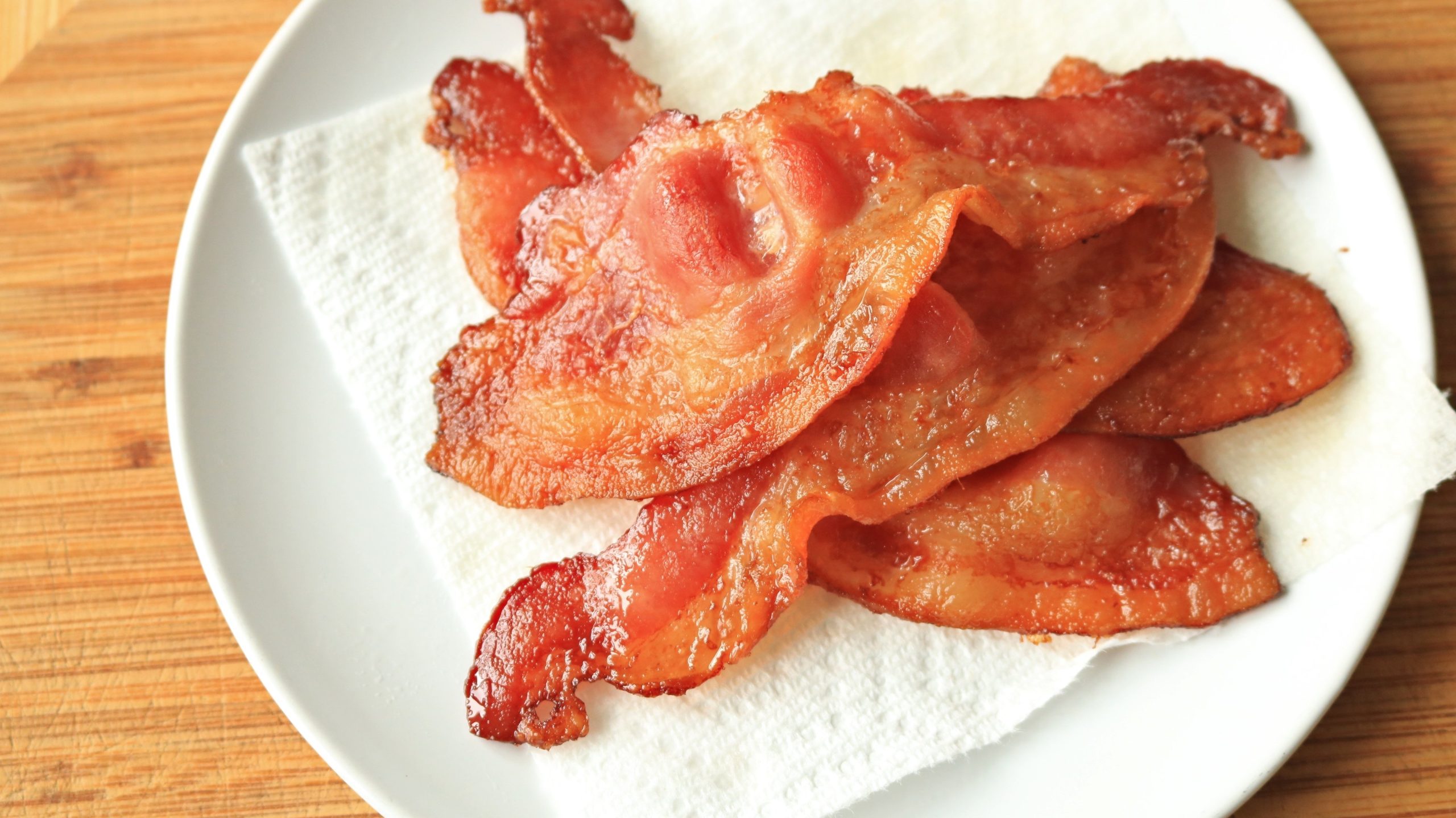As soon as it became safe for me to cook on the stove unsupervised—say 12 years old?—I began to fry bacon. I’d do my best to stretch out the wobbly strips so they wouldn’t overlap or curl up too much and brace myself for the impact of tiny, sharp, popping oil splatters. I loved the results (chewy, crispy bacon is a compelling reward), but I hated the process and the clean-up that followed. It wasn’t worth it. But instead of giving up on bacon, I changed my approach. Now I oven bake my bacon and it’s the only way I’ll ever do it.
Why oven-baking your bacon is best
Oven-baking is superior to pan frying because you don’t have to babysit it, the stovetop is available for other cooking, you’re not subject to painful splatters, and cleanup can be a breeze with a simple trick (more on that in a moment). Furthermore, it’s an absolute lifesaver if you’re hosting a large brunch party and you need to cook three pounds of bacon. You aren’t limited to how many slices you can fit in your frying pan. Instead, you can bake as much bacon as you can fit on a large sheet pan. And if your oven has two racks, guess what? You can bake two sheet pans-worth of bacon.
What oven temperature is best for bacon?
I usually cook my bacon in a 350°F degree oven for about 20 minutes. The timing will change slightly depending on if you’re using thin or thick cut bacon, but that’s my go-to temperature. It’s hot enough to crisp and brown the bacon within a reasonable amount of time to cook the rest of breakfast, but not so hot where you scorch your precious pork before you know it. I’ve always had success at this temperature and I find that it provides a cooking window perfect for catching your bacon at exactly the doneness you like.
Occasionally, if I’m in a rush, I’ll bump the temperature to 400°F. However, doing this always comes with the understanding that I may burn it. This temperature is fine and it’ll shave five to eight minutes from your overall bake time, but if I’m in a rush then my mind is probably in 10 places at once and not on my bacon. I have scorched my meat at this temperature before. If you need bacon fast, try 400°F—but set a timer.
How to bake the best batch of bacon
The steps are simple, and this hands-off method allows you to use the stove top for important business, like pancakes and eggs.
1. Line the baking sheet
As much as I dislike single-use aluminum foil, this is key for cleanup. Pick a medium to small baking sheet and use a single piece of aluminum foil to line it. Use the lip of the pan to shape the foil so that you have four walls. Even if your sheet pan is bigger, you can still use the edges to shape walls, the foil just won’t be hugging the sides of the pan and that’s fine. The goal is to capture the rendered fat.
Credit: Allie Chanthorn Reinmann
2. Arrange the bacon and bake
Within the foil arena you’ve made, lay out the strips of bacon. It doesn’t matter which direction they go and they can touch side to side, but just make sure they’re flat and not overlapping. If they do overlap then you’ll have some steam pockets and uneven cooking. For crispy bacon, this is a sin. However, if you like chewy, soft bacon then this might be all right for you.
Put the sheet of bacon in a preheated 350°F oven and leave it be for 18 to 20 minutes, or until you’ve achieved your preferred bacon texture.
Credit: Allie Chanthorn Reinmann
3. Easy clean-up
Oven-baked bacon is more evenly cooked and stays flatter compared to pan-fried bacon. In the case of clean-up, baked wins again. Remove the bacon strips from the foil—they should release easily—and put them on some paper towels to blot off excess fat, or let them cool on a wire cooling rack.
Now you have a foil lined baking sheet full of liquid bacon drippings. Yes, you could just lift this up and toss it in the trash, but you might be risking some fat dribble escaping onto the floor or into the trash. Instead, I toss the entire sheet tray into the fridge or freezer for about five minutes to solidify the fat. Now you can lift the foil, crumple it up, and toss it with zero mess.
Credit: Allie Chanthorn Reinmann
Alternatively, save your bacon drippings. The rendered fat you capture is an especially delicious ingredient and you can use later in other meals. Simply run the liquid fat through a fine mesh strainer and into a jar. Here are the best tips on collecting, storing, and using your bacon fat, like using it to grease your waffle maker or flavoring your popcorn with it. Extra bacon fat can be a great flavoring tool in other parts of your breakfast or for adding a bit of smoky flavor to bean dishes, proteins, biscuits, vegetables, and pastas.
